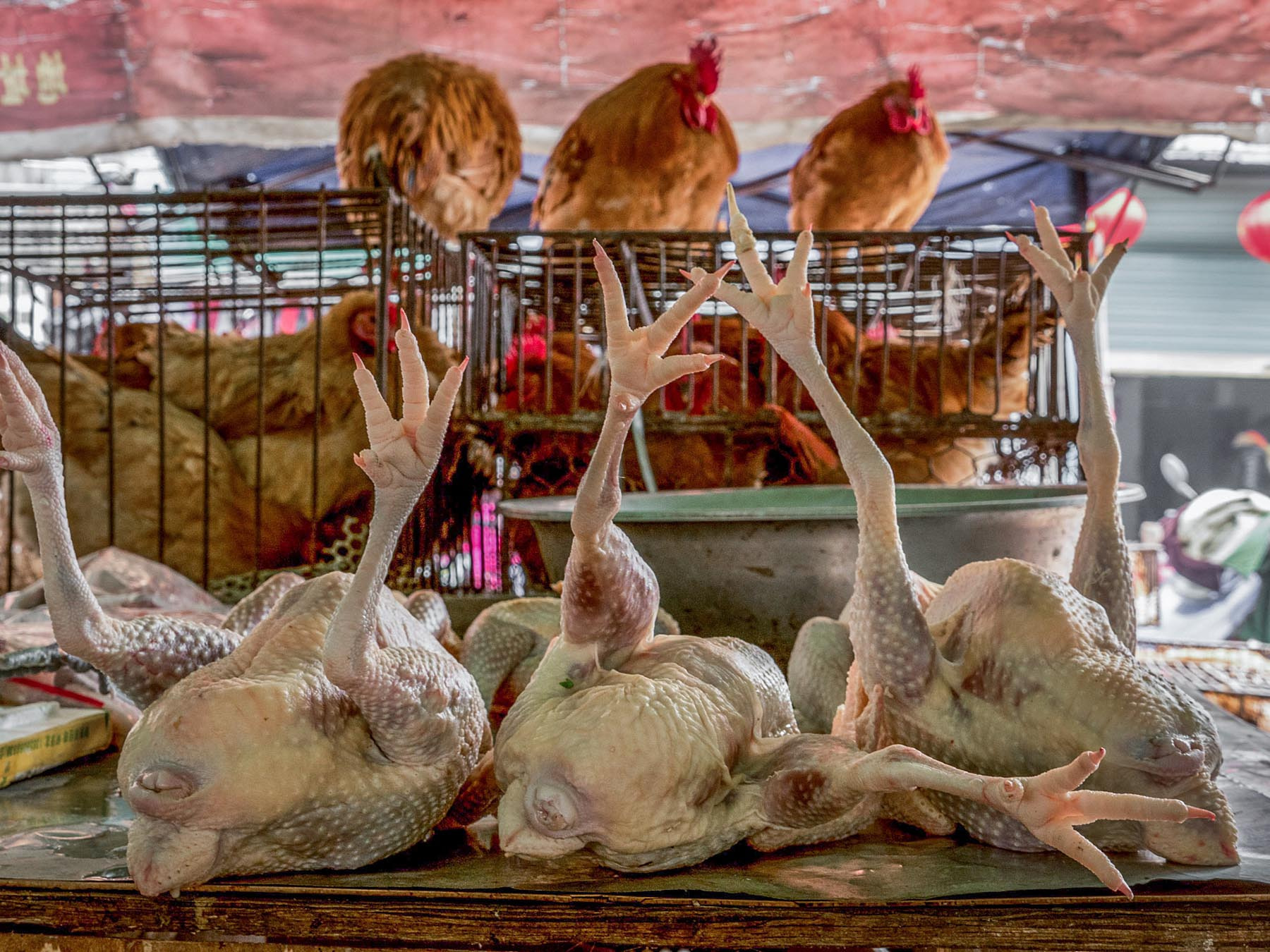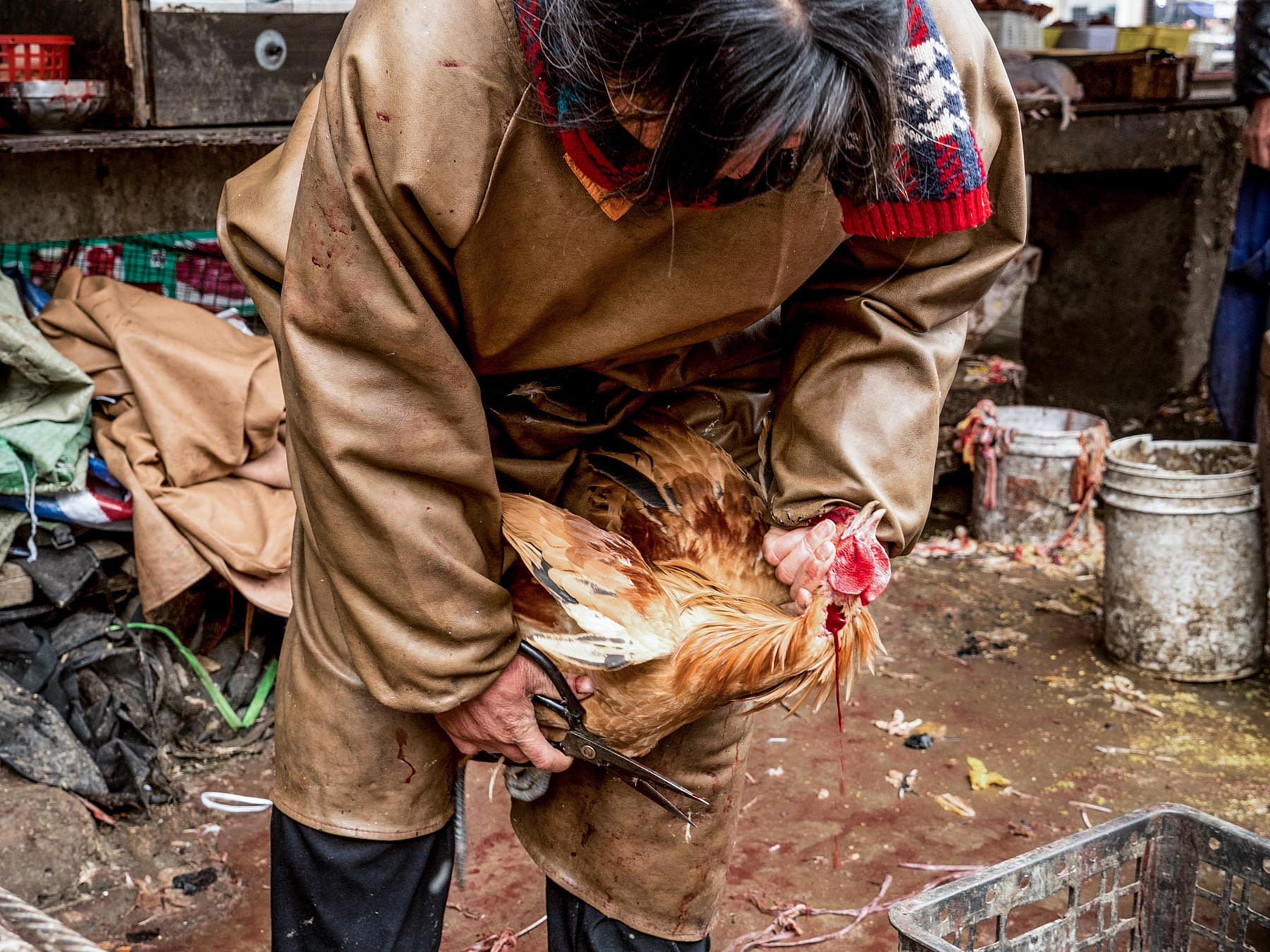Vendor chops newly-delivered chicken carcasses at a wet market in Taipei. Taipei, Taiwan, 2019.
Jo-Anne McArthur / We Animals
[Content warning: Contains confronting images and/or video footage]
We are never as removed from animals as we would like to pretend.
In recent months following the outbreak of Coronavirus (COVID-19), the world has been introduced to 传统市场, better known as “street markets” or “wet markets”. They are places common across Asia for all things perishable, such as fruits, vegetables, and – most notably – animals, dead or alive.
I’ve visited and documented many such markets over the years and, though no two are the same, I’m always struck by their shared, defining sense of raw chaos. There’s a constant roar of shouting, haggling customers and the puttering engines of scooters as they snake their way through narrow rows of vendor stalls. Meat cleavers rhythmically pound through impossibly large chunks of flesh, flicking bits and juice with each repeated chop. Sometimes adding to this ambience is the sound of a live animal who has been chosen from a crate and now attempts one last desperate escape before they are butchered and deconstructed in front of a waiting buyer.
Buying and selling at a wet market in Taipei. Taiwan, 2019.
Kelly Guerin / We Animals
These images offer a glimpse into what is often purposely obscured in the west.











It is the space in between the whole, living animal and their unrecognizable, packaged parts. It is the precarious middle where cross-contamination and disease transmission waits. It is the living proof of what has been true all along; be it pig or pangolin, we are never as removed from animals as we would like to pretend.
To view more images from this story, please visit our Animal Markets gallery on the We Animals stock site.




